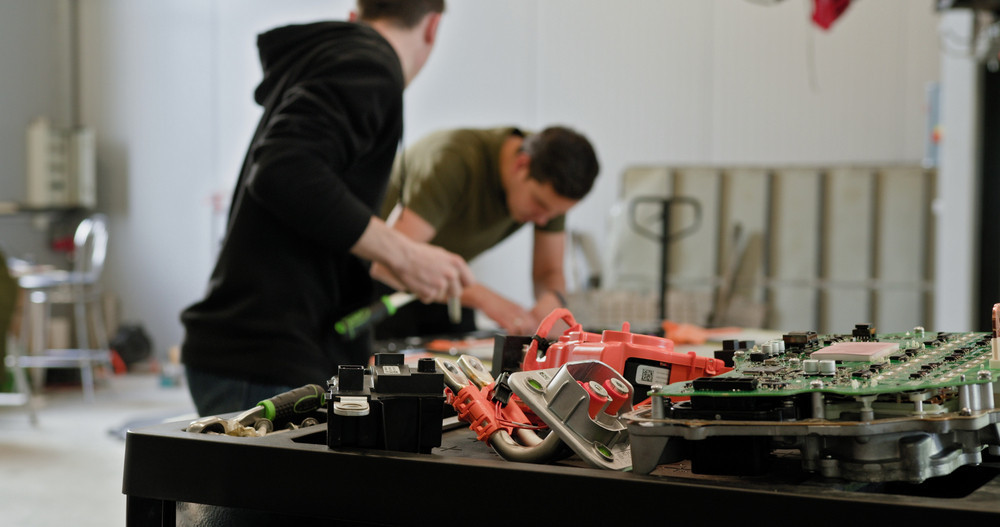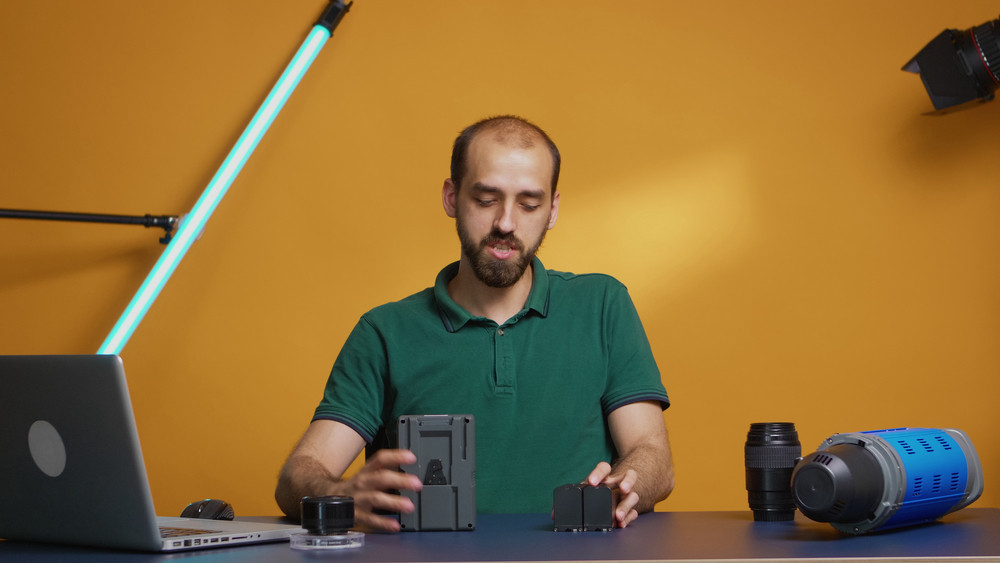Highlights
- Thermal runaway is a self-accelerating reaction that can turn a small fault into extreme heat, fire, or explosion.
- Common triggers include mechanical damage, internal shorts, overcharging, and exposure to high ambient temperatures.
- Design factors—separator quality, electrolyte flammability, cathode chemistry, pack spacing, and cooling—strongly influence risk.
- Independent research quantifies how heat input and cell spacing drive failure propagation, while real-world tests show how misuse can ignite e-mobility packs.
- Practical prevention: use correct chargers, avoid heat and damage, retire swollen packs, and favor devices with robust BMS and safety testing.
Lithium-ion batteries power our phones, laptops, tools, e-bikes, and electric cars because they store a lot of energy in a compact package. The tradeoff is that high energy density leaves less margin when things go wrong. The most serious failure mode is thermal runaway, a chain reaction where heat causes internal components to break down and release even more heat, gases, and sometimes flames. Incidents typically begin with an abnormal condition—physical damage, a manufacturing flaw, or unsafe charging—then escalate if the cell can’t shed heat fast enough. Understanding why overheating and fires occur helps consumers use batteries safely and guides manufacturers toward better designs that reduce the likelihood, severity, and spread of failures.
Thermal runaway starts when a cell crosses a critical temperature and exothermic reactions take over. Polymer separators can shrink or melt, electrodes can decompose, and the organic electrolyte—often flammable—can vaporize and vent. That chemistry creates a positive feedback loop: rising temperature accelerates reactions that generate even more heat. Even if the external heat source disappears, the runaway can sustain itself long enough to vent hot gases, eject burning material, and ignite nearby cells or combustibles. In battery packs, tightly packed cells, poor ventilation, and inadequate heat sinks make heat removal difficult; as a result, a single failing cell can push neighbors past their safe limits and turn a localized fault into a pack-level event.
Several triggers can initiate that first spike in temperature. Mechanical abuse—drops, punctures, crushes, or repeated flexing—can tear the separator and create an internal short that unleashes a burst of current and heat. Undetected manufacturing defects or aging can also create microscopic shorts through dendrite growth or particle contamination. Environmental factors matter, too. Storing a device in a hot car, operating without airflow, or placing a charger on a soft surface that traps heat raises cell temperature and reduces the cushion before critical thresholds are reached. Once internal hotspots form, they can grow rapidly, degrading materials and concentrating stress where the cell is weakest.
Electrical abuse is another major cause. Overcharging—pushing a cell above its specified voltage—can plate metallic lithium onto the anode, puncture the separator, and destabilize the cathode and electrolyte. Fast charging beyond design limits adds stress and heat, especially at elevated ambient temperatures. Using the wrong or counterfeit charger may bypass the device’s protective logic altogether. On the flip side, severe over-discharge can also damage cells and increase internal resistance, leading to abnormal heating during the next charge. These electrical stressors shorten life and lower the temperature at which dangerous breakdown reactions begin, turning everyday use into a potential ignition scenario if paired with heat or physical damage.
Design choices and safety systems determine whether small problems remain small. High-quality separators resist shrinkage, while shutdown separators can block ion flow as they warm. Battery management systems (BMS) monitor voltage, current, and temperature, cutting off charging or discharging when limits are exceeded. Pack architecture—cell spacing, fire-resistant barriers, venting paths, and thermal interfaces—affects how heat spreads or dissipates. Chemistry matters as well: some nickel-rich cathodes store more energy but can release more heat under abuse, while alternatives like certain lithium iron phosphate formulations tend to be more thermally stable. No single feature guarantees safety, but layers of protection together reduce both the chance of ignition and the severity if something fails.
A typical failure sequence looks like this. A device is fast-charged in a hot room using an uncertified charger. A subtle manufacturing flaw leaves a weak spot in the separator. Localized overpotential and heat at that weak spot create a microscopic internal short. The hotspot grows, the separator shrinks, and electrolyte begins to vaporize. Pressure builds; the cell vents flammable gases that can ignite on contact with a spark or hot surface. If cells are densely packed with minimal cooling, the first cell’s heat drives neighbors past their onset temperatures, and the event propagates through the pack. In confined spaces—closets, car trunks, under pillows—the resulting heat and smoke have nowhere to go, increasing damage.
Independent lab research offers quantitative insight into how and when propagation occurs. According to a 2025 Scientific Reports study, the way heat is applied (for example, side heating) and the physical spacing between cells significantly influence whether runaway spreads through a module. Greater inter-cell distance and improved thermal pathways slow or prevent propagation, while concentrated heating along cell walls accelerates it. The study also highlights how electrode materials and construction interact with abuse conditions to raise or lower ignition thresholds. These findings reinforce a practical design message: manage where heat goes, give it room to escape, and choose materials that tolerate abuse before crossing into runaway.
Real-world fire testing complements those models with what happens outside the lab. According to research from UL’s Fire Safety Research Institute (FSRI) and UL Solutions, misuse—especially overcharging and overheating—can drive e-mobility batteries into thermal runaway, producing intense flames, toxic gases, and fast-moving fire growth when packs are charged or stored improperly. The work underscores the risks of charging in obstructed spaces, stacking multiple devices on one outlet strip, or ignoring early warning signs like hissing, popping, smoke, or swelling. It also details how burning cells can re-ignite after seeming to go out, which is why responders and consumers should treat a “quiet” pack with caution until it is fully cooled and isolated.
So which products are riskiest? Devices with high energy density in tight enclosures, limited vents, and minimal thermal mass give heat fewer ways to escape. Packs assembled with inconsistent quality control or unverified cells may harbor defects that pass initial tests yet fail under stress. Sparse or inaccurate sensors in the BMS can miss local hotspots. Finally, user behavior can overwhelm safeguards: charging on beds or sofas, covering devices, leaving packs in cars on hot days, mixing and matching chargers, or continuing to use swollen or damaged batteries. None of these by itself guarantees a fire, but together they narrow the margin for error until ordinary conditions can tip a cell into runaway.
Practical prevention blends good products with good habits. Buy devices and replacement packs from reputable makers and look for certifications that indicate abuse testing and protection circuitry. Charge on hard, nonflammable surfaces with adequate airflow, and unplug when a device is finished. Use only chargers that match the device’s specifications, and avoid daisy-chaining power strips or piling chargers in confined outlets. Keep batteries out of direct sun and hot cars, and store them around room temperature at partial charge if they’ll sit for weeks. Retire any pack that bulges, smells like solvent, hisses, or runs unusually hot. If a battery smokes or vents, move away, call emergency services if fire starts, and let professionals handle re-ignition risk.
For manufacturers, research-backed design choices reduce risk at the source: select thermally stable chemistries when possible; specify separators with reliable shutdown behavior; incorporate conservative BMS thresholds and accurate temperature sensing near hot spots; create thermal pathways that move heat into heat sinks instead of neighboring cells; and use spacing, fire-resistant barriers, and directed venting to prevent a single failure from cascading. Testing under realistic abuse—mechanical, electrical, and thermal—helps validate those choices before products ship. As consumer demand grows, the industry’s safest path is layered protection: better materials, smarter electronics, and architectures that assume small faults will happen and ensure they don’t escalate.
Bottom line: lithium-ion battery fires are not random; they are the foreseeable result of heat, damage, or misuse meeting designs that cannot dissipate stress fast enough. The science of thermal runaway explains the “why,” while standards, engineering controls, and user practices provide the “how” to prevent it. By combining high-quality products with sensible day-to-day charging and storage, most overheating scenarios are avoidable—and when rare failures do occur, robust pack design keeps them contained rather than catastrophic.





